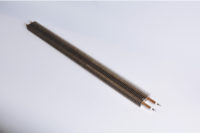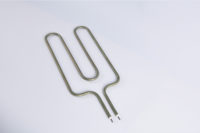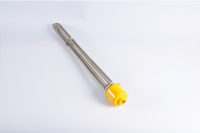Questions:
Currently we are using steam (2.8tph,@250’C) to heat up the ambient gas(3.2tph, @30’C) for salt drying in a fluidbed dryer (inlet temp 195’C), so I would like an equivalent air heater. More specs are followed, please calculate the electricty power:
Air volume, 32 ton/h;
Air pressure, 97 kPa
To heat ambient air from 30’C to 195’C
Salt air dryer.
Answers:
To calculate the electricity power required for an equivalent air heater to heat the ambient air from 30°C to 195°C for your salt air dryer, we need to consider the following factors:
- Air Flow Rate (m2): 32 tons/hr, which is equivalent to 32,000 kg/hr.
- Inlet Air Temperature (T2): 30°C.
- Desired Outlet Air Temperature (T3): 195°C.
Now, let’s calculate the heat energy required to heat the air:
Q=m2∗Cp2∗(T3−T2)
Where:
- is the mass flow rate of air (32,000 kg/hr).
- is the specific heat capacity of air, which is approximately 1.006 kJ/kg°C.
- is the desired outlet air temperature (195°C).
- is the inlet air temperature (30°C).
Let’s calculate Q:
Q = 32,000 kg/hr * 1.006 kJ/kg°C * (195°C – 30°C)
Now, we can calculate the electricity power (P) required to provide this heat energy, taking into account the efficiency (η) of the heating system. Let’s assume an efficiency of 90% (0.9):
[P = \frac{Q}{η} = \frac{32,000 kg/hr * 1.006 kJ/kg°C * (195°C – 30°C)}{0.9}\]
Now, let’s calculate P:
P = \frac{32,000 kg/hr * 1.006 kJ/kg°C * 165°C}{0.9} = 601,592.59 kJ/hr\]
To convert this to kilowatts (kW), you can use the following conversion:
1 kW = 3.6 x 10^6 J/hr
So:
[P = {601,592.59 kJ/hr}{3.6 x 10^6 J/hr/kW} \approx 167.11 kW\]
Therefore, you would need approximately 167.11 kilowatts of electricity power to heat the ambient air from 30°C to 195°C for your salt air dryer with the specified air volume and conditions. Please note that this is an approximate calculation, and actual requirements may vary based on system efficiency and other factors.



Leave A Comment